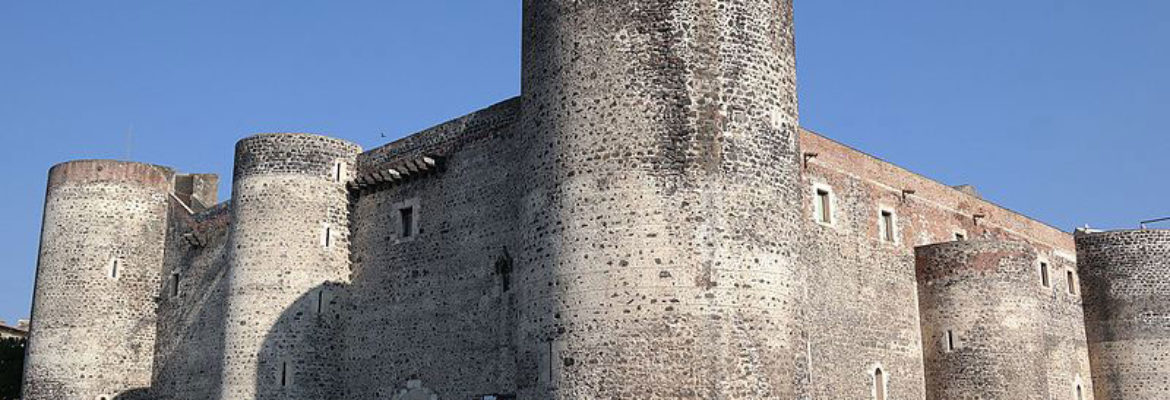Some relics and traces of the city’s Jewish past have survived in Catania. Here are a few:
The Castello Ursino, which Federico II had built in 1239-1250, proves the tolerance and syncretism between different cultures in Sicily under Swabian rule. On the north east tower, there is an image made from river pebbles depicting two menorah, while a star of Solomon stands above the tympanum of the large eastern window. In civic museum housed in the castle are kept various Jewish burial epigraphs in Greek and one in Latin, with the oldest inscription of “Shalom al Israel” in Hebrew (literally, peace upon Israel).
Castello Ursino
Piazza Federico II di Svevia
Information and contacts:
Informazioni e contatti:
Tel. +39 095 345830
Email: museocivico.castelloursino@comune.catania.it
https://www.comune.catania.it/la-citta/culture/monumenti-e-siti-archeologici/musei/museo-civico-castello-ursino/
In the Archaeological museum Guido Libertini there is a funerary inscription on white marble, that was discovered on the wall of a grave in Via A. di San Giuliano. The translation from Greek is “Presbyter Irenaeus bought the place, without offending the law”.
Museo Guido Libertini
Institute of Archaeology of Catania University
Via Biblioteca, 4
Information and contacts:
tel. +39 095 7102767 – +39 334 9242464 / info@officineculturali.net
https://www.facebook.com/museodiarchelogiacatania/
Inside the Duomo, in the chapel on the right of the high altar, there is the funerary monument of viceroy Fernando D’Acugna, pious of Saint Agata, who strictly and humanity manage the expulsion of Sicilian Jews.
Duomo
Via Vittorio Emanuele II, 163
Tel. +39 339 485 9942

